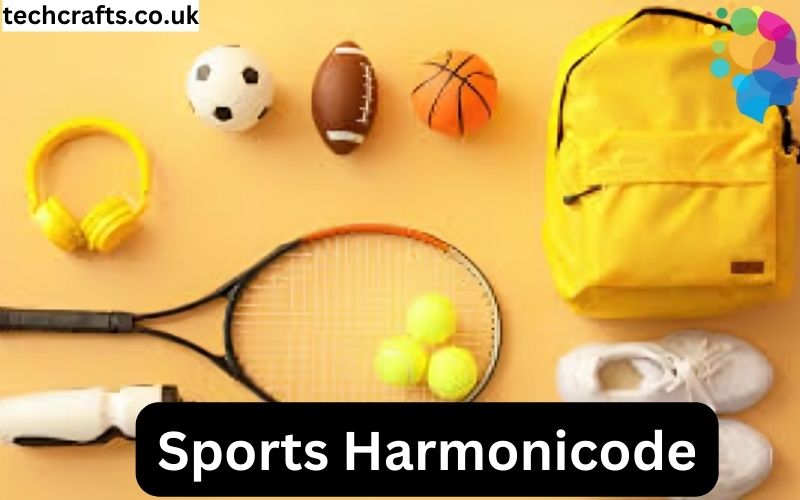In the rapidly evolving world of sports science, a groundbreaking approach known as Sports Harmonicode is transforming how athletes train, recover, and perform. By integrating biomechanics, rhythm, artificial intelligence (AI), and wearable technology, Sports Harmonicode offers a personalized and efficient pathway to peak athletic performance. This comprehensive guide delves into the core principles, technological integrations, applications across various sports, benefits, challenges, and future prospects of Sports Harmonicode.
Defining Sports Harmonicode
Sports Harmonicode is an innovative training methodology that combines the analysis of an athlete’s unique movement patterns with rhythmic and harmonic principles. By identifying and optimizing these patterns, athletes can achieve more fluid and efficient movements, leading to enhanced performance and reduced injury risk.
The Science Behind the Approach
At its core, Sports Harmonicode is rooted in biomechanics—the study of the mechanical laws relating to the movement or structure of living organisms. Every athlete has a unique set of movements that can be broken down into patterns. These patterns, when analyzed, reveal certain resonances or harmonics that are either beneficial or detrimental to performance. By identifying these harmonics, coaches can create personalized training programs that enhance beneficial patterns and minimize negative ones.
Core Technologies in Sports Harmonicode
AI-Powered Analytics
Artificial intelligence plays a pivotal role in Sports Harmonicode by analyzing vast amounts of data to identify patterns and provide predictive insights. AI algorithms can break down every movement, strategy, and outcome in minute detail, allowing athletes to anticipate opponents’ movements and optimize their own performance.
Wearable Technology
Advanced wearable devices, such as smartwatches and fitness trackers, monitor an athlete’s movements, heart rate, and other biometric data in real-time. These sensors provide valuable insights into technique and form, enabling coaches and athletes to track progress and make necessary adjustments.
Virtual and Augmented Reality
Virtual reality (VR) and augmented reality (AR) technologies are increasingly used in Sports Harmonicode to simulate real-world scenarios in a controlled environment. Athletes can practice skills and strategies without the risk of injury, making these technologies ideal tools for training.
Biomechanical Analysis Tools
Using advanced motion capture technology, biomechanical analysis tools assess an athlete’s movements in great detail. These systems track joint angles, body posture, and muscle activation, providing a comprehensive view of performance.
Applications Across Various Sports
Basketball
Biomechanical analysis for injury prevention
Data-driven player development and scouting
Real-time feedback on shooting technique
Tennis
Serve technique analysis and correction
Personalized training plans for players
Mental performance training for pressure situations
Swimming
Biomechanical analysis for stroke optimization
Personalized training plans for swimmers
Real-time feedback on technique
Athletics (Track and Field)
Personalized training plans for athletes
Biomechanical analysis for technique optimization
Data-driven strategy for races and events
Golf
Data-driven swing analysis and correction
Personalized training plans for golfers
Course strategy and optimization
Benefits of Sports Harmonicode
Enhanced Performance
By aligning training with an athlete’s natural movement patterns, Sports Harmonicode helps them move more efficiently, conserving energy and enhancing endurance.
Injury Prevention
Understanding and optimizing the body’s harmonic patterns can lead to a significant reduction in injuries, keeping athletes in the game longer.
Personalized Training
No two athletes are the same, and Sports Harmonicode acknowledges this by creating highly personalized training regimens.
Faster Recovery
In addition to enhancing performance, Sports Harmonicode can also aid in the recovery process. Music has been shown to have a positive impact on muscle relaxation and recovery, and when combined with rhythmic movements, it can help athletes recover more quickly after intense training sessions.
Mental Focus
The rhythmic aspect of the training requires athletes to stay attentive to the music while executing movements. This constant mental engagement helps athletes improve concentration and mental resilience.
Challenges and Considerations
Limited Research
More comprehensive research is needed on the effectiveness and long-term impact of Sports Harmonicode.
Complexity of Human Movement
Human movement is complex and multifaceted, making it difficult to capture and examine fully.
Individual Variability
Athletes respond differently to training, and Sports Harmonicode may need to be tailored to individual needs.
Technological Dependence
Athletes and coaches may become overly reliant on technology, reducing the value of traditional methods and instinctive training.
Cost and Accessibility
Advanced tools like AI analytics and motion capture systems can be expensive, limiting access for smaller teams or individuals.
The Future of Sports Harmonicode
As wearable tech, AI, and biomechanics continue to advance, the future of Sports Harmonicode looks promising. We can expect greater integration of machine learning, more accurate biomechanical modeling, and the use of real-time feedback loops to adjust training instantaneously. Furthermore, the blend of rhythm and physical motion may evolve into full-spectrum neuro-muscular training regimens, enhancing performance beyond the physical to cognitive and emotional levels.
Conclusion
See Also: Cnlawblog
Sports Harmonicode represents a bold step forward in the world of athletic training and sports science. By marrying the science of biomechanics with rhythm, AI, and personalized data, it creates a holistic approach to performance improvement. Athletes who embrace this method stand to gain not only enhanced results but a deeper understanding of their own capabilities. As technology continues to evolve, Sports Harmonicode could very well become the cornerstone of modern athletic development.
(FAQs)
What is Sports Harmonicode?
Sports Harmonicode is an advanced training method that uses biomechanics, rhythm, and technology to enhance athletic performance and prevent injury.
Who can benefit from using Sports Harmonicode?
Athletes across all sports, as well as their coaches and trainers, can benefit from the personalized insights and data-driven training this system offers.
Is this approach only for professional athletes?
No, both amateur and professional athletes can utilize Sports Harmonicode. However, access to advanced technology may be limited for some non-professionals.
Does Sports Harmonicode require special equipment?
Yes, it often uses wearable technology, motion capture systems, and AI-based analytics tools for full functionality.
How does music or rhythm play a role in Sports Harmonicode?
Rhythm helps synchronize movements, improves timing, and enhances mental focus. It can also aid in faster recovery and muscle relaxation.
Can Sports Harmonicode prevent injuries?
Yes. By identifying poor movement patterns and correcting them, this method helps reduce the likelihood of overuse and impact injuries.
How does AI fit into Sports Harmonicode?
AI analyzes data collected from the athlete’s body to detect patterns, offer real-time feedback, and customize training regimens.
What are the main limitations of Sports Harmonicode?
Current limitations include the high cost of equipment, complexity of data interpretation, and the need for more research on long-term effects.





